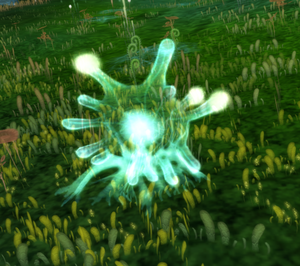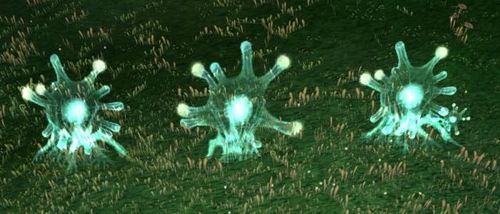Difference between revisions of "Dziku"
From EncyclopAtys
m (Edition from FR page) |
m |
||
| Line 30: | Line 30: | ||
The [[homins]] have no use for it. | The [[homins]] have no use for it. | ||
| − | [[File:Dzikus.jpg| | + | [[File:Dzikus.jpg|500px|thumb|left|Dzikus at various stages of development]] |
{{Clear}} | {{Clear}} | ||
{{Last version link|Dziku}} | {{Last version link|Dziku}} | ||
Revision as of 17:36, 3 August 2019
| Taxonomic Amber | |
| Dziku | |
|---|---|

| |
| Kingdom | {{{king}}} |
| Category | {{{species}}} |
| Main Ecosystem(s) | Prime Roots |
| Counterattack type | n.a. |
The dziku (otherwise known as amoeba) is also an animal, of the same family as the cokamool.
Unlike its cousin it is not composed of multiple small replicas of itself and develops no protective shell. The outer face is flexible and non-yielding to touch.
It bears a multitude of bioluminescent stinging hairs on some of its tips (harmless to larger animals) which allow it to attract and catch the microorganisms which it feeds upon.
The inside is 98% water. The denser central part is its stomach.
The homins have no use for it.
Last version 2019-11-13•ᐒ
| |
| |




